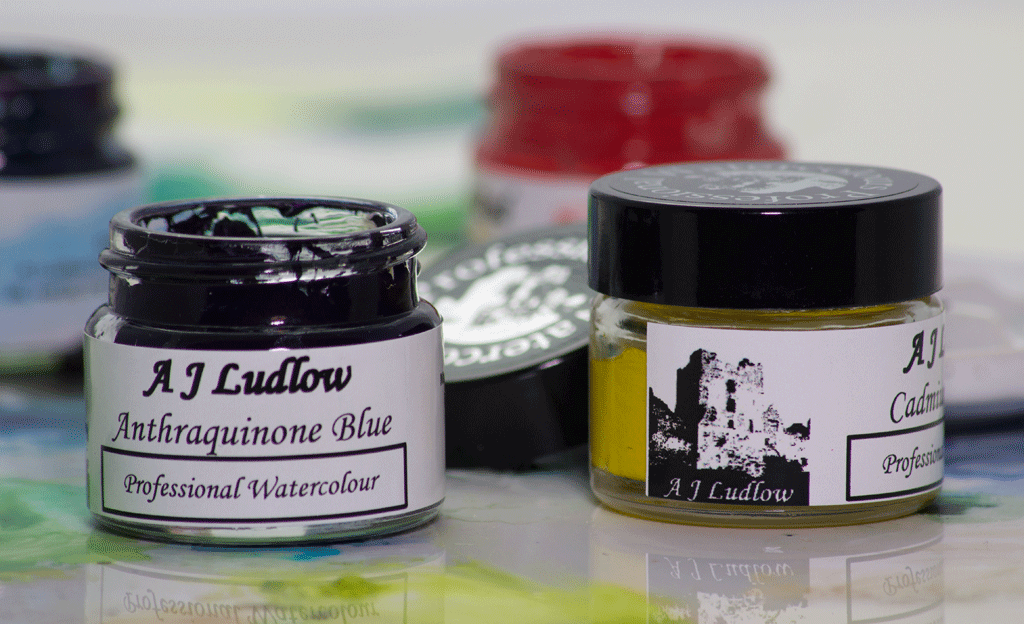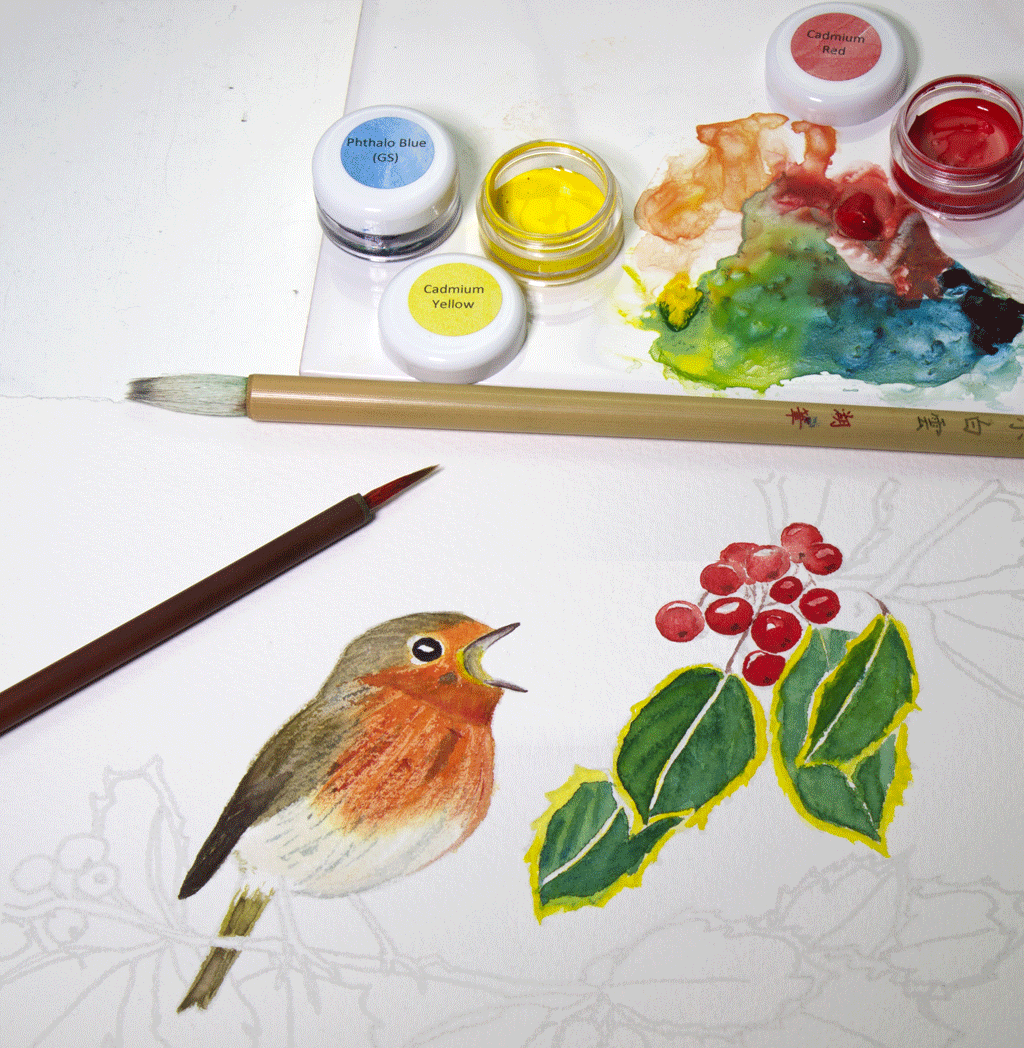ARTicles
Are Traditional Chinese Painting Brushes suitable for Watercolour Painting?
Using the oldest member of the “Four Treasures of the Study” to paint watercolours, could be the start of a beautiful love affair with traditional Chinese Painting brushes.

Much has been said about the reputation of art materials and accessories that have been made in China, and most comments have been less than flattering. “The world’s factory”, as China is often referred to, has been exploited by many commercial entities in order to obtain goods that meet the right price point, have an enticing appearance, but not necessarily perform as well as they should. The art material supply industry has been no exception and much of the “affordable” paint and brushes, aimed at the beginner and available through our art retailers, has come from “the world’s factory”, with the sole intention of meeting the right price point.
However, it is not fair to expect all of the goods made in China to be of the same quality, or if you forgive the pun, “be tarred with the same brush”. Speak to a brush maker in the UK and they will tell you that the quality of the brush is derived from several aspects of its manufacture; sourcing the right hair, the brush maker’s skill in dressing the hair and their experience and knowledge, the quality of the other raw materials and their suitability in the manufacturing process and the expected use of the finished brush, which will include design and process aspects and the capabilities of all those involved. So, why should it be any different for brush making anywhere else?
From my experience, it has been around 25 years since the first Western Joint Venture companies set up brush factories making “western-style” brushes in China and transferred some of their technology and knowhow. Certainly, “western-style” brushes have been made in China before that time, but much of the brush making skills had been lost when China shut the door on the world in 1949. This may explain why there is a difference in performance, as the Chinese brush makers improve their manufacturing skills and the raw materials available to them, improve in quality.
But wait a minute, brush making has a long tradition in China, dating back to the Han Dynasty, which dates from 202BCE* to 220CE (Wikipedia - The Four Treasures of the Study), I hear you say?
This is where my “tarring” warning comes in as these brushes are different and rather than be regarded as just “goods to be sold”, they form part of the cultural fabric of China. These brushes were specifically designed and made for Chinese ink painting and as such, there is great skill and craftmanship in their manufacture, as they form one of the “Four Treasures of the Study” (文房四寶)**, which has great significance in Chinese tradition and culture. It is therefore no surprise that the knowledge and expertise to make them was never lost, but passed down the generations from master to apprentice and the materials from which they are made are selected with care in much the same way as they have always been. Obviously this is good to know if you are a Chinese Painting artist, but what has this got to do with us watercolourists?
Well before I answer that question, let us just remind ourselves what we watercolourists are looking for in a brush. In the first instance, the brush must be suitable for painting out free flowing water-based paint, and so must be made with hair (natural or synthetic) that can “hold and release” water, hold a fine point, spring back to its original shape after each use and distribute the watercolour evenly on the surface of the watercolour paper. Other considerations like the type of hair, shape (round or flat) and size all feature in our decisions as well as price, which tends to be the limiting factor.
Would it be surprising to learn that the traditional Chinese brush (毛笔) meets the requirements listed above? Designed to apply a water-based ink to paper made from various plant-based fibres (known as Xuan paper), such as sandalwood, bamboo, hemp, linen, mulberry bark and rice straw (Chan). The brushes are made of animal hair, the type of which, depends on how it will be used and the desired stiffness and spring required; the hair selection of modern brushes is primarily white goat hair, black rabbit, yellow weasel or a combination. The brush head can form a fine point for detailed work or be spread out for washes. It is said that only a Chinese brush is suitable for Chinese brush painting because they have unique properties that only work for this specific type of painting (Matthews), but I would argue that these properties are also useful to us watercolourists.

Figure 1: The selection of traditional Chinese brushes assessed for this ARTicle.
For this and next month’s ARTicles I have chosen a selection of brushes to evaluate in various sizes and made using different hair types (as shown in figure 1). Brushes with the largest head are generally used for Chinese calligraphy as they can hold a substantial amount of ink and are excellent for writing large Chinese characters with long flowing strokes. The other four slim handled brushes are generally used for smaller calligraphy work and painting, with the two brushes with the smallest amount of hair, used for detailing. Each one of these selected brushes form a point when dipped into water as shown in figures 2 to 5, indicating that the hair is of a high standard and has been dressed skilfully during the brush making process.

Figure 2: Large calligraphy brushes made from (a) pure black rabbit hair and (b) a combination of yellow weasel hair surrounded by white goat hair.
The brush’s softness will depend on the type of hair that is used; pure white goat is the softest, black rabbit is a little firmer, whilst yellow weasel, although still fairly soft, is the stiffest. With respect to the amount of water the brush head can hold, white goat hair is very absorbent and the hairs tend to stay together when wet and so is expected to give good control whilst using. The two brushes shown in figure 2 are made from (a) black rabbit and (b) a combination of white goat and yellow weasel hair.
When comparing to white goat hair, the brush made of black rabbit hair (figure 2a) is still absorbent and relatively soft but the hairs are stiffer. Black rabbit is more absorbent than weasel hair, which forms the core of the large calligraphy brush in figure 2b. By combining a core of yellow weasel hair surrounded by white goat hair, the brush will have a firmness and control as well as the ability to hold a good amount of water.

Figure 3: Painting brushes made from a combination of black rabbit hair, surrounded with white goat hair, in (a) large size and (b) medium size.
Combination brushes can give the artist the benefits of both types of hair. Those similar to the brushes shown in figure 3, tend to be popular with watercolourists that have already tried painting watercolours with traditional Chinese brushes. The larger of the two brushes (figure 3a) can hold a lot more water, than the medium one (figure 3b). There is also a smaller version of this brush available, in case the absorbency of the medium sized brush is still too much.

Figure 4: Painting brushes made from (a) pure white goat hair and (b) pure yellow weasel hair.
The two brushes shown in figure 4 are at either end of the Chinese brush spectrum and I will compare their performance in next month’s ARTicle. The pure goat hair brush (figure 4a) is softer and more absorbent than the brush made from yellow weasel hair (figure 4b), which is less absorbent and stiffer.











